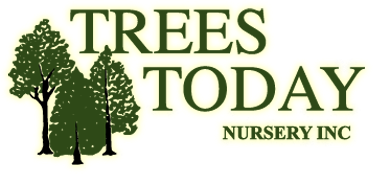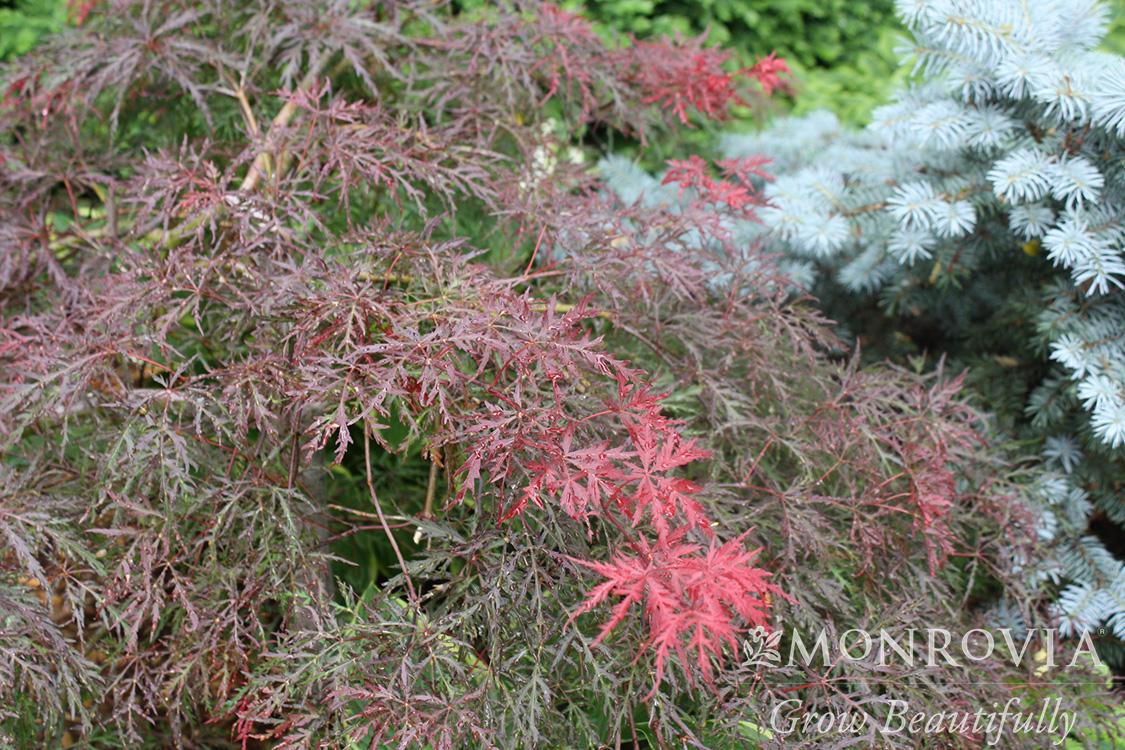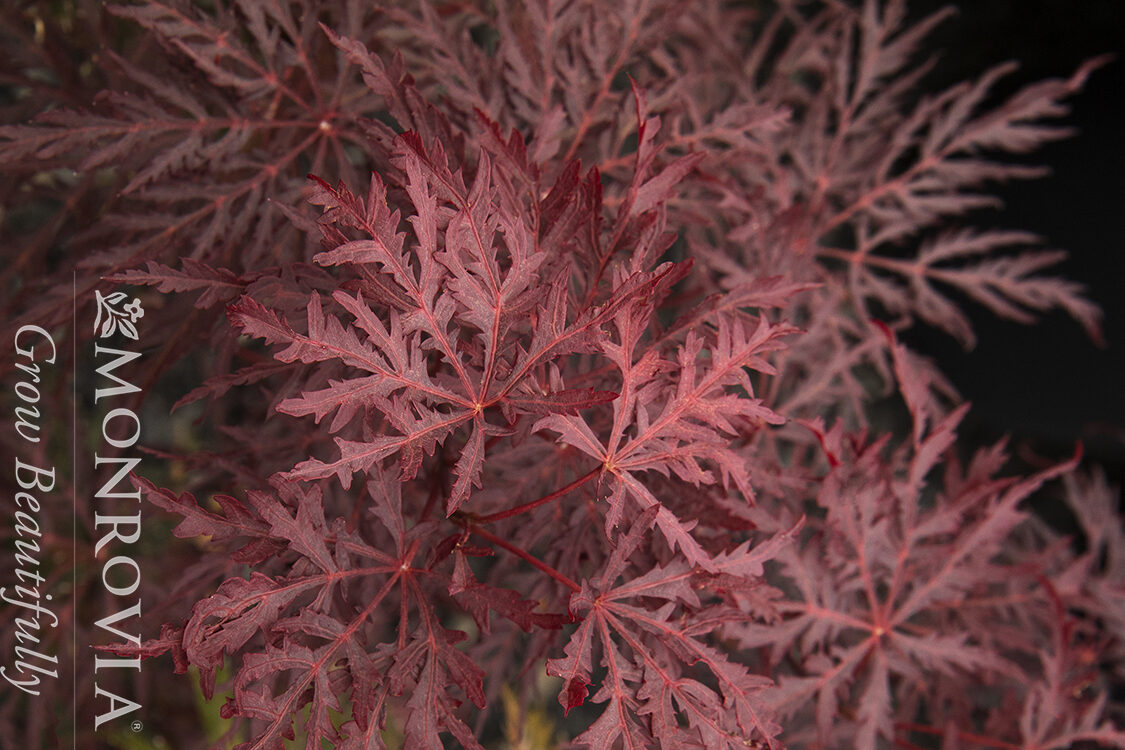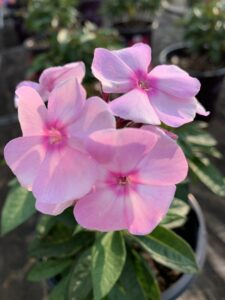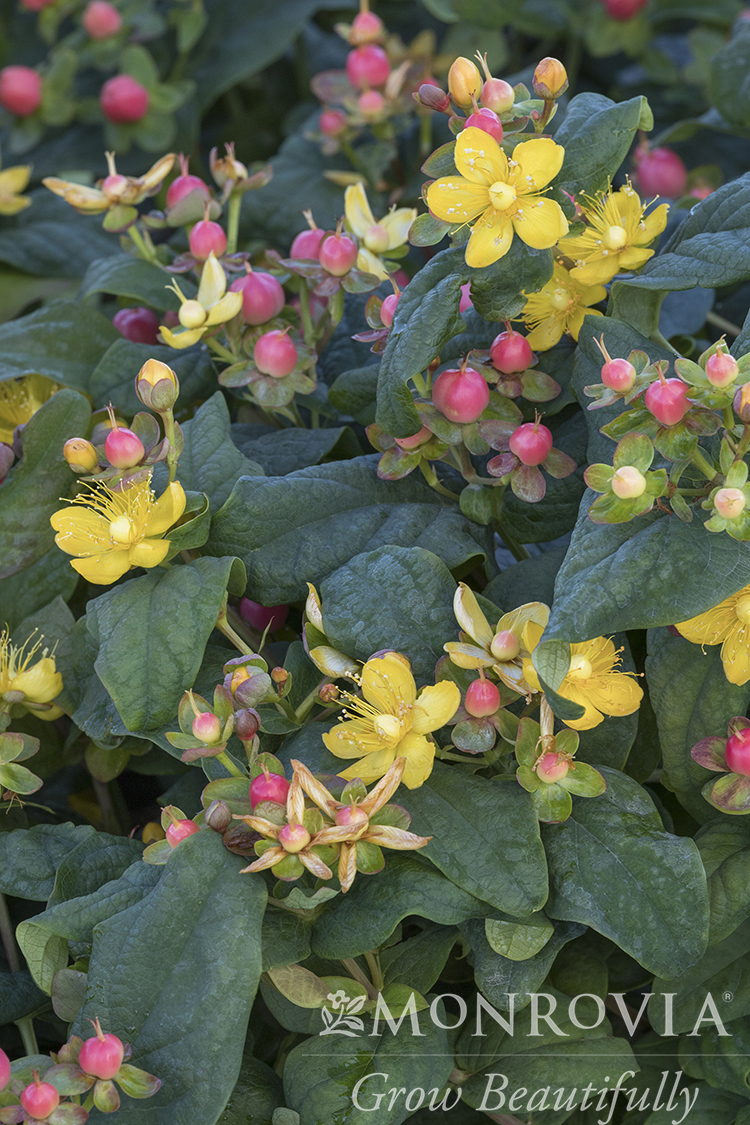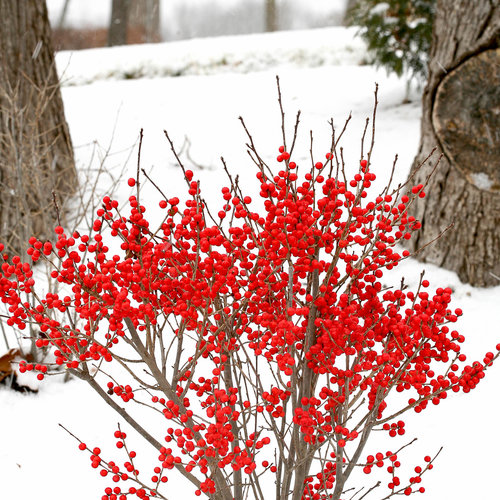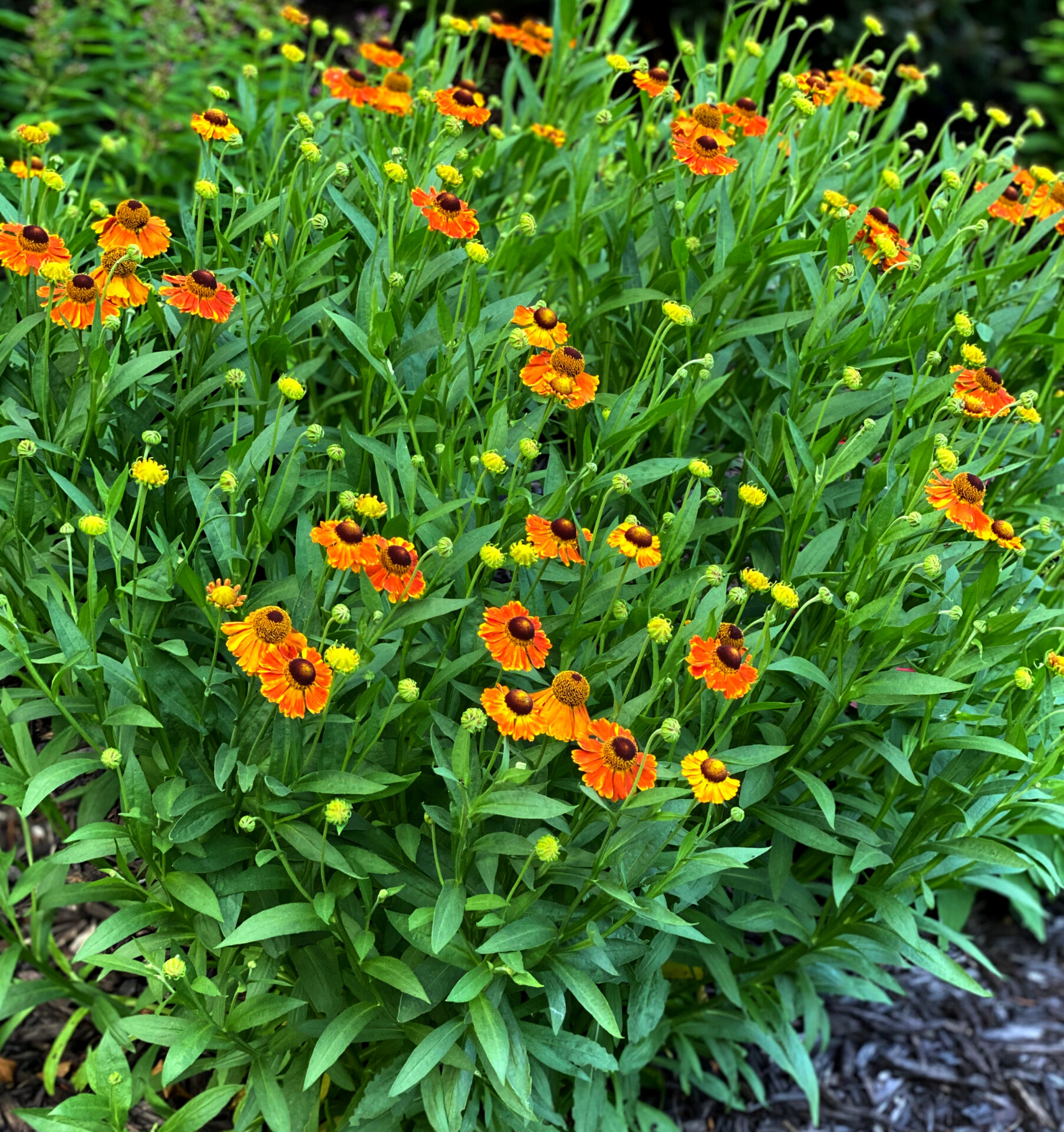Finally, a Japanese Maple that is a zone 4. This is a dwarf maple that was discovered growing in a yard in Minneapolis by a landscaper. The maple was about 4 ft tall and 8 ft wide. Obviously this tree survived some very harsh winters, even the polar vortex. The Velvet Viking was named for its rich velvety color and after the Minnesota’s Viking football team. Monrovia Nursery received some cuttings and began the long process of bringing this plant to market. (-MPLS Star-Tribune 6/13/20) Presently there is only a limited supply of these trees available to the public. Be the first in your neighborhood to plant this tree. Since they are a dwarf variety, they also make beautiful patio plantings in a pot.
Hidden Gems Plant Them Now!
Hello October! It has been a long year with ups and downs. Fall is officially upon us and one thing is certain, we cannot wait to see nature transition into its fall attire! Fall is a friendly reminder that change is possible, necessary, and can be refreshing for the soul.
Being a season of change, now is the perfect time to refresh your landscape with some hidden gems that will add beauty to your landscape for seasons to come. Fall is the perfect time to put the spotlight on some of these varieties that may not get the attention they deserve earlier in the season.
Autumn Magic Black Chokeberry
Aronia melanocarpa ‘Autumn Magic’
Rounding out at five feet in height and four feet in width, the Autumn Magic chokeberry is a show stopper of a plant! White spring flowers invite a delicious tart berry excellent as a jam or they can be paired with a handful of pretzels or string cheese for a savory snack. Aronia is also an exceptional fruit to be utilized in the fermentation process for those that like to create their own beverages. Once the berries are gone for the season, fall is around the corner and one can look forward to the rich tones of red and orange that provide the final act of the season.
Emerald Triumph Viburnum
Viburnum ‘Emerald Triumph’
Exceptionally low maintenance, viburnums are a delightful addition to the landscape as a specimen plant or can be incorporated into a hedge. Emerald Triumph has a broad, glossy leaf which provides great texture and coverage along with the contrast against the white flowers appearing in spring. Berries transitioning from red to black extend the value this plant brings to the landscape.
Autumn Brilliance Serviceberry
Amelanchier x grandiflora ‘Autumn Brilliance’
Ranking high in popularity, the serviceberry is one of a kind. Delicate white flowers are trailed by an edible purplish-black fruit excellent for fresh eating. Fall foliage is outstanding with shades of red and orange throughout fall until the showy grey bark and intriguing branching are in full display during winter. Not only will the tree provide the landscape with many seasons of interest, it also benefits wildlife who also feed on the fruit.
Tom Thumb Creeping Cotoneaster
Cotoneaster adpressus ‘Tom Thumb’
Ideal for any rock garden or dry location, the Tom Thumb cotoneaster will not disappoint! Is there a hillside that is too steep to manage? Are you in search of low lying fall color? Tom Thumb is the plant you need! This small sprawling plant is covered in delicate glossy leaves that come ablaze in fall. Reaching a height of about one foot and spreading to about six feet, this plant will prove its durability and low maintenance in no time.
If you are looking for hardy, durable plants for your landscape look no further than these hidden gems. These are both small and large plants that can bring a world of impact to the landscape. Hidden gems can be found just about anywhere you look. Stop in and find one today!
The Phlox of Fall
No, we’re not talking about flocks of birds, we’re talking about flowering phlox! A small plant that packs a punch of color, especially late into the season. There is still plenty time to plant if the procrastination bug got to you this season. Now is the time, the phlox are in full bloom here at the nursery. Stop in and bring some vibrant color to your garden!
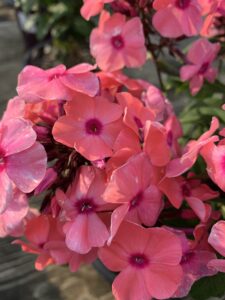
Grasses, the Secret of the Landscape
Grasses are the “Secret of the Landscape”. They are perfect for spots where you need height but not width, look terrific mixed in with evergreens, plus they have a characteristic all their own in winter. NOW is the perfect time to buy perennial grasses as most of them are putting on their fall show displaying unique seed heads, ranging from dainty to oat-like stalks to flumes. Another benefit of fall purchasing is to see the red/russet color that many of these grasses will turn in fall. We have the following grasses in stock: Shenandoah Switch, Karl Foerster Feather Reed, Flame, Avalanche Feather Reed, Red Silver Japanese Silver, Overdam Feather Reed, Porcupine, Little Bunny Dwarf Fountain and Prairie Drop Seed.
Fall Mums have Arrived
Our famous mums have arrived. We have over 400 hundred mums in red, orange, white, yellow and various shades of these colors. It may be time to replace some of those tired annuals with colorful fall garden mums and enjoy them as we head into Fall.
Gardening in August
As the garden season is winding down, following are a few suggestions on “Gardening in August”:
Quit fertilizing rose bushes, shrubs and trees after August 15th.
Start dividing flowers that need it, i.e. irises, hostas, daylilies, grasses, etc.
Continue watering evergreens until a hard freeze.
Continue weeding your garden.
Continue deadheading flowers that will continue to bloom.
Remove deceased plants from your garden.
If the annuals in your planters are wore out, consider replacing them with fall mums.
Harvest your herbs.
Fall Color Soon
If you drool over beautiful Autumn trees that put on amazing displays of color, now is the time to think about planting one. Of course maple trees are known for their exceptional fall colors, ranging from yellow/orange to deep reds. However there are many other dazzling, colorful fall trees. Imagine a grove of Quaking Aspens shimmering with their gold leaves. For those yellow/gold fall colors, consider the following trees: Gingko, Quaking Aspen, Lindens, Honeylocust, Birch, Hackberry and Elms. For those of you who enjoy more reds and oranges there are the Serviceberry, Oaks – specifically the Northern Pin Oak, and the native Blue Beech. Then for orange or red berries in fall we have the Showy and European Mountain Ash trees. Our staff will gladly help you choose the right fall color that will work in your situation.
FloralBerry® Rosé St. John’s Wort
What an outstanding and gorgeous small shrub this is as it has unique yellow flowers in summer followed by rose colored berries in fall. The branches are thick with dark green foliage, making a wonderful hedge. We recommend covering it with mulch in fall as it is a Zone 5 and we do not warrantee it. However, we have grown and warranteed other Zone 5, St. John’s Wort shrubs as they have proven to survive our winters. The flowers also make great cut flowers. For more information, click FloralBerry® Rosé St. John’s Wort
Berry Poppins
Finally we have the Berry Poppins winterberry for sale at our nursery. We have tried for several years to get this shrub but it was never available so we are pretty thrilled that we now have it in stock. If you like winterberries, or a shrub with red berries in winter, this might just be the one for you! It has a height and spread of 3-4′ and you can use Jim Dandy (the male) as the pollinator. Read more about it by clicking on the following link.
www.provenwinners.com/
Sneezeweed? A blooming workhorse of a plant!
Sneezeweed (Helenium) is an undeserved name for this great plant. Years ago the leaves and flowers of the plant were ground up for snuff, thus causing a sneeze. Sneezeweed blooms from late summer up until frost, nonstop. A great wildlife plant for bees and butterflies. In fall when some of our perennials are drying up, the sneezeweed will provide food for those butterflies and bees. Then in winter birds will pick over the seeds. Sneezeweed is also a great plant for medium to wet soil (will not tolerate dry soil). A must for clay soils. Another plus, Sneezeweed is deer and rabbit resistant. At present we have three varieties of sneezeweed in stock. They are Mariachi Bandera Sneezeweed, Mariachi Sombrero Sneezeweed and Mariachi Salsa Sneezeweed.
Look at all the buds on this year old Sneezeweed:
Important Garden Tasks to do before Winter:
- Clean and sharpen garden tools.
- Mow around young trees and fruit trees to prevent mice from nesting there.
- Put tree guards on or wrap young trees with tree wrap to prevent rodent damage.
- Read your animal/insect repellents to verify when to quit using them.
- Move indoors in a safe place, protected from young children, any liquid garden products.
- Clean, store and turn upside down outdoor containers.
- Rake fallen leaves off grass.
- Give all trees and shrubs, especially evergreens and boxwoods, a thorough watering before the ground freezes hard.
- Remove water from garden hoses before storing away.
- Cover compost pile with plastic or straw.
- Drain fuel tanks on lawn mowers, leaf blowers, etc
Note: Some of this information was taken from “The Old Farmers Almanac”.
On the Products and Plants pages in this website, you will find some pdf’s on overwintering hydrangeas and roses.
Your Perennial Garden: What plants to cut back or leave until spring.
Before winter, remove all diseased debris and broken branches from your flower garden. Discard any remaining annuals.
Recommended perennials to cut back in fall are: bearded iris; monarda (bee balm) unless it is new growth; gaillardia (blanket flower); nepeta (catmint); columbine; daylily (now or spring); bush clematis; helianthus; hollyhock; ligularia (now or spring); penstemon; peony; and helianthus.
These perennials are recommended to leave for spring cutting: asclepias (butterfly weed); chrysanthemums (mammoth mums); and heuchera (coral bells).
Birds will appreciate it if you leave echinacea (cone flowers) and rudbeckia (black-eye Susans) or any other seed producing plants standing through winter.

